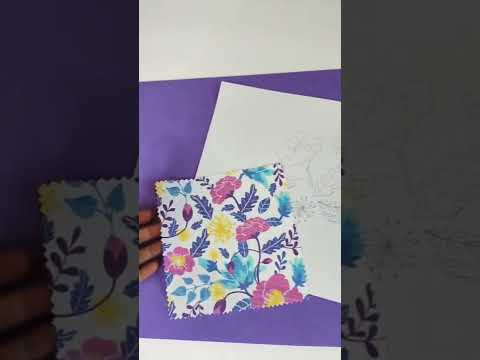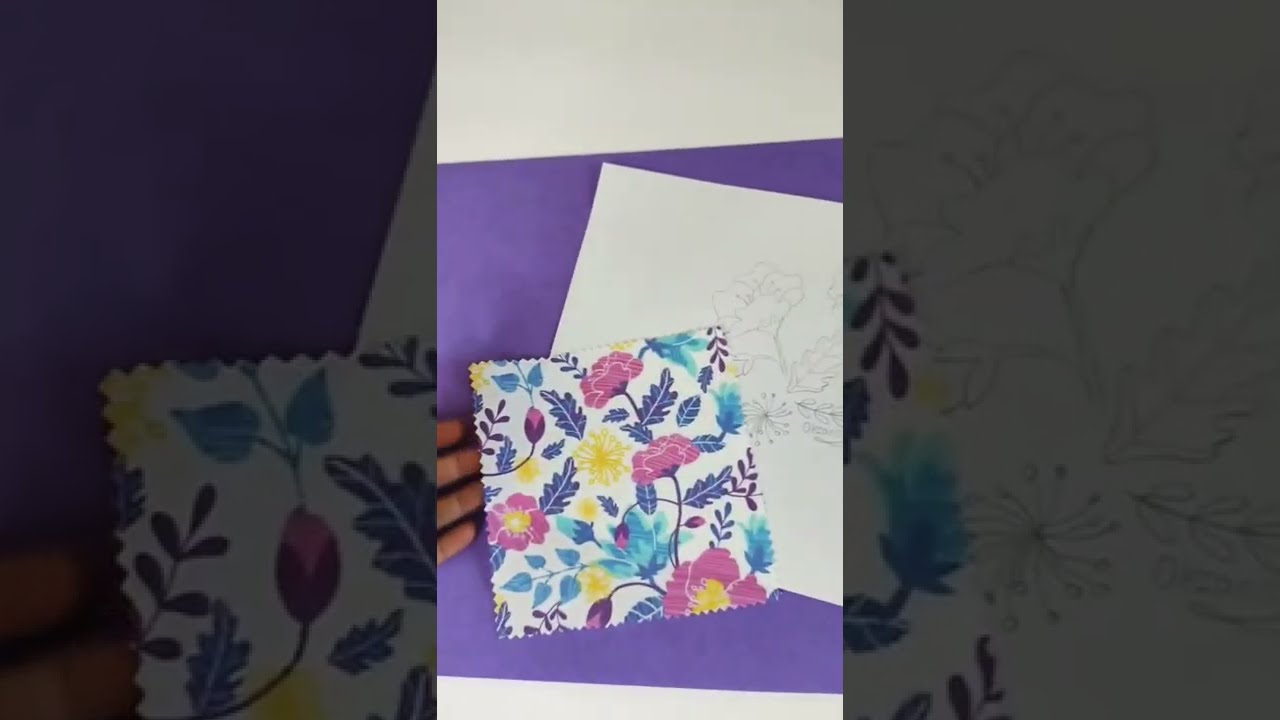Discover the captivating world of patterned fabrics, where creativity, diversity, and versatility intertwine harmoniously. Let your imagination run wild as you explore an extensive collection of intricate, vibrant, and exquisite patterns that breathe life into any design project. From floral motifs that exude elegance and grace to geometric prints that add a contemporary touch, these fabrics offer an endless array of possibilities. Whether you're envisioning a statement piece or seeking to revamp your living space, these distinctive textiles are sure to captivate your senses. Their premium quality and durability ensure that each creation stands the test of time, making them an investment you won't regret. Embrace the opportunity to create unique garments, stunning upholstery, or eye-catching accessories that showcase your personal style. With unlimited combinations and unmatched variety, patterned fabrics provide an avenue for self-expression and a gateway to transform any space from ordinary to extraordinary. Dive into this mesmerizing world where beauty, innovation, and craftsmanship come together, inspiring you to bring your creative visions to life. Let the patterns speak to you, and embark on a journey filled with endless design possibilities.

The Beauty of Patterned Fabrics
Patterned fabrics have long been a staple in the world of design and fashion. From luxurious tapestries to intricate prints, these fabrics add a touch of charm and personality to any space or outfit. In this article, we will explore the history, types, and uses of patterned fabrics, and delve into why they continue to be a popular choice for designers and consumers alike.
The History of Patterned Fabrics
Patterns have been used in textiles for centuries, with some of the earliest examples dating back to ancient civilizations such as Egypt and Mesopotamia. These early patterns were often inspired by nature and featured motifs such as flowers, animals, and geometric shapes. As time went on, patterned fabrics became more complex and diverse, incorporating influences from different cultures and artistic movements.
During the Renaissance, patterned fabrics reached new heights of popularity. Intricate tapestries adorned the walls of castles and palaces, depicting scenes from mythology and history. These tapestries were not only decorative but also served practical purposes, providing insulation and soundproofing in the grand halls of Europe.
Printed fabrics emerged in the 18th century, thanks to advancements in textile manufacturing techniques. Block printing and later screen printing allowed for the mass production of patterned fabrics, making them more accessible to a wider audience. This marked the beginning of a new era in design, where patterns could be replicated and distributed on a larger scale.
The Types of Patterned Fabrics
There is a vast array of patterned fabrics available today, each with its own unique characteristics and uses. Let's explore some of the most popular types:
1. Floral Prints
Floral prints are timeless and versatile. They can range from delicate and intricate designs to bold and vibrant patterns. Floral prints are commonly used in clothing, upholstery, and home decor, adding a touch of elegance and femininity to any setting.
2. Geometric Patterns
Geometric patterns are known for their clean lines and symmetrical shapes. They can be simple or complex, offering endless possibilities for creative expression. Geometric patterns are often used in modern and contemporary design, adding a sense of structure and order to a space.
3. Animal Prints
Animal prints, such as leopard or zebra patterns, bring a touch of the wild to any design. These prints are often used as accents or statement pieces, adding a bold and exotic element to clothing and interior spaces.
4. Paisley Designs
Paisley designs originated in Persia and have since become a popular choice for patterned fabrics. These intricate patterns feature teardrop shapes and swirling motifs, creating a sense of movement and elegance. Paisley designs are commonly used in textiles, such as scarves and upholstery.
5. Abstract Patterns
Abstract patterns are characterized by their unconventional and non-representational designs. They often incorporate bold colors and shapes, creating visually striking and dynamic fabrics. Abstract patterns are commonly used in contemporary art and fashion, adding a sense of creativity and individuality to a design.
Uses of Patterned Fabrics
Patterned fabrics have a wide range of uses, spanning from fashion to interior design. Here are some common applications:
1. Clothing and Accessories
Patterned fabrics are a popular choice for clothing and accessories as they add visual interest and personality to an outfit. From dresses and shirts to bags and scarves, patterned fabrics can elevate any wardrobe.
2. Upholstery and Home Decor
Patterned fabrics are often used for upholstery, adding a decorative touch to furniture such as chairs, sofas, and cushions. They can also be used for curtains, bedding, and wallpaper, allowing for endless design possibilities in the realm of home decor.
3. Art and Crafts
Patterned fabrics are a favorite among artists and crafters. They can be used for quilting, embroidery, and other textile-based crafts, allowing for endless creativity and expression.
4. Event and Stage Design
Patterned fabrics play a crucial role in event and stage design, creating visually captivating backdrops and set pieces. From theatrical productions to weddings, patterned fabrics add a touch of drama and ambiance to any occasion.
5. Packaging and Branding
Patterned fabrics are often used in packaging and branding, helping companies create a distinct and memorable visual identity. From luxury fashion brands to artisanal food products, patterned fabrics can elevate the perceived value and aesthetic appeal of a product.
The Enduring Appeal of Patterned Fabrics
Patterned fabrics have stood the test of time, captivating designers and consumers alike for centuries. Their diverse range of styles, uses, and historical significance continue to make them a popular choice in the world of design and fashion. Whether it's a delicate floral print or a bold geometric pattern, patterned fabrics have the power to transform any space or outfit into a work of art.
Collaborative Fabric Design: From Sketch to Stunning Floral Print in Record Time!
List of Patterned Fabrics
Patterned Fabrics
| Pattern | Description | Origin | Popular Usage |
|---|---|---|---|
| Herringbone | The herringbone pattern is characterized by a distinctive V-shaped weave resembling the skeleton of a fish. It creates a visually captivating effect and adds a touch of sophistication to any fabric. | Originating from Ancient Egypt, the herringbone pattern gained popularity in Europe during the Roman Empire and has since become a staple in the textile industry worldwide. | Herringbone fabrics are widely used in tailored suits, coats, and high-end upholstery due to their timeless appeal and ability to add depth and texture to any design. |
| Floral | The floral pattern is a classic motif that depicts various types of flowers, leaves, and plants. It brings a sense of charm, femininity, and nature-inspired beauty to any fabric design. | Floral patterns have been present in textile art for centuries, with their origins traced back to ancient civilizations such as Persia and China. However, they gained significant popularity in Europe during the Renaissance period. | Floral fabrics are commonly used in home decor, fashion, and accessories. They evoke a sense of romance and elegance, making them ideal for dresses, curtains, bedding, and even upholstery. |
| Geometric | The geometric pattern is characterized by repetitive shapes, lines, and angles, often forming intricate and symmetrical designs. It brings a modern and contemporary aesthetic to any fabric. | Geometric patterns have been used in various cultures throughout history, including ancient Egypt, Greece, and Islamic art. However, they gained immense popularity during the Art Deco movement in the early 20th century. | Geometric fabrics are highly versatile and can be found in a variety of applications, including fashion, interior design, and even industrial settings. They add a bold and visually stimulating element to any space or outfit. |
| Stripes | The stripe pattern consists of parallel lines of equal width, running horizontally, vertically, or diagonally across the fabric. It creates a sense of order, simplicity, and timeless elegance. | Stripes have a long history dating back to ancient times, with evidence of their use found in ancient Egyptian textiles. They gained significant popularity in Europe during the Middle Ages and continue to be widely used today. | Striped fabrics are incredibly versatile and can be found in numerous applications, from clothing to home furnishings. They are particularly popular for shirts, dresses, bedding, and curtains, as they can effortlessly complement various design styles. |
Note: The above information is provided for educational purposes and to showcase the diversity of patterned fabrics. There are numerous other patterns available in the market, each with its own unique history and characteristics.

